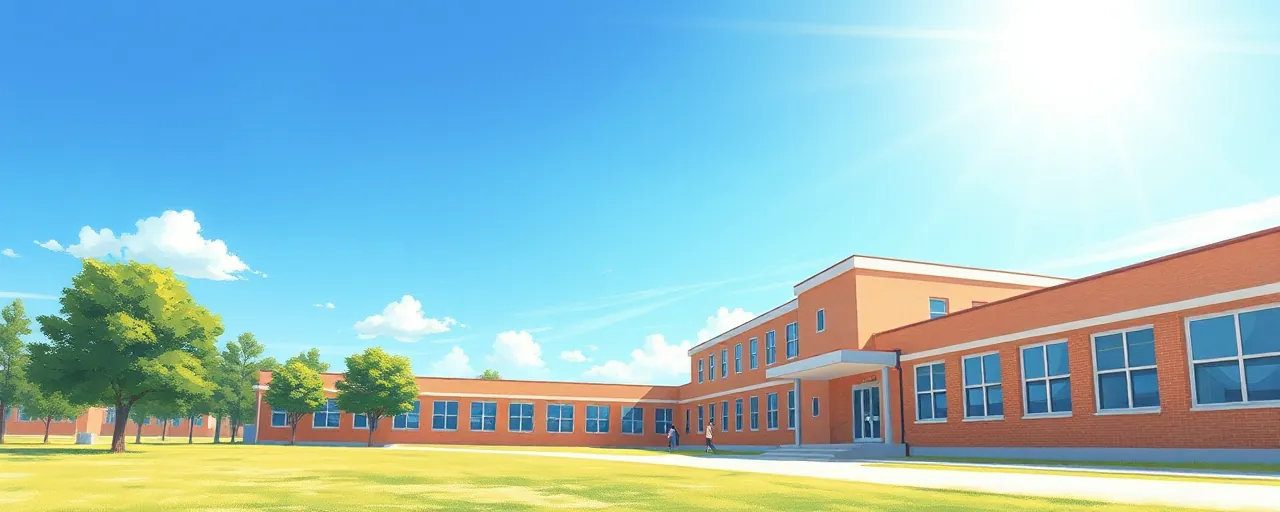A New Chapter for Palisades High
In Santa Monica, more than 2,400 students from Palisades Charter High School stepped into a former Sears building on April 22, 2025, marking their return to in-person learning after devastating wildfires forced them into remote classes. The January fires, which tore through Southern California, damaged eight public schools, including Palisades High’s original Pacific Palisades campus. For students, educators, and families, the reopening represents a hard-won step toward normalcy.
The converted Sears site, now a temporary campus, showcases a growing trend: adaptive reuse, where old commercial spaces are transformed for public use. With debris cleared from the original school last month, all eight affected schools have now resumed in-person instruction, a milestone in the region’s recovery. The rapid response reflects a coordinated push by state and local officials to prioritize education amid crisis.
For students, the shift back to classrooms brings relief but also challenges. Many are grappling with the emotional toll of displacement and loss. The temporary campus, while functional, lacks the familiarity of their old school. Yet, the effort to keep education on track underscores a broader commitment to community resilience.
This story extends beyond Palisades High. Across California, schools are navigating the fallout of increasingly frequent climate-driven disasters, raising questions about how to protect education in an era of intensifying wildfires, floods, and heatwaves.
Adaptive Reuse: A Practical Solution
Transforming a vacant Sears into a school wasn’t just a creative fix; it’s part of a broader movement to repurpose underused commercial buildings. In recent years, adaptive reuse has surged in cities like Los Angeles, where nearly 60% of commercial structures are over 50 years old. Converting these spaces for schools, housing, or community centers is faster and greener than new construction, often cutting carbon emissions by up to 50%.
California has leaned into this approach, allocating $400 million to support such projects. Local governments have streamlined permits and offered tax breaks to make conversions viable. The Santa Monica site, for instance, benefited from emergency ordinances that sped up the process, allowing Palisades High to reopen within months. This flexibility proved critical when traditional rebuilding timelines stretched too long.
Still, adaptive reuse isn’t a cure-all. Temporary campuses can feel makeshift, and retrofitting old buildings to meet modern safety and accessibility standards is costly. Some parents and educators worry about the long-term suitability of such spaces, especially for younger students or those with special needs. Balancing speed, cost, and quality remains a persistent challenge.
Climate Threats to Education
The wildfires that displaced Palisades High students are part of a larger pattern. In 2024 alone, climate-related disasters disrupted schooling for 242 million students across 85 countries. In the U.S., over half of public school districts sit in counties hit by major disasters between 2017 and 2019. Aging school buildings, many not designed for extreme heat or flooding, struggle to withstand these events.
High temperatures and poor ventilation can hamper learning, with studies linking heat to reduced concentration and test scores. Wildfires add another layer, destroying infrastructure and forcing prolonged closures. In California, the January 2025 fires closed 335 schools, affecting over 211,000 students. While most in the Los Angeles Unified School District reopened quickly, the destruction of campuses like Palisades High required creative solutions.
Efforts to fortify schools are underway. The EPA’s Climate Resilient Schools Program and similar initiatives aim to retrofit buildings for heat, floods, and storms. Some advocate for schools to double as community shelters, blending resilience with public utility. Yet, funding shortages and outdated building codes slow progress, leaving many schools vulnerable.
Equity and Access in Crisis
Disasters don’t hit everyone equally. Students from low-income families, those with disabilities, or those in under-resourced schools face steeper hurdles during recovery. When schools close, digital divides—limited internet or devices—can stall remote learning. After the wildfires, some Palisades High students struggled with online classes, highlighting gaps in access to technology.
Research shows that prolonged disruptions widen achievement gaps. After Hurricane Maria in Puerto Rico, students in hard-hit areas saw sharp declines in test scores, with marginalized groups hit hardest. To counter this, California prioritized rapid school reopenings and expanded mental health services, recognizing that emotional recovery is tied to academic progress.
Advocates for educational equity stress the need for targeted support, like EdTech investments and community-driven recovery plans. The U.S. Department of Education has committed funds to aid affected schools, but ensuring these resources reach the most vulnerable students remains a work in progress.
Navigating Disaster Response
The swift reopening of Palisades High reflects a broader state and federal effort to streamline disaster recovery. California’s governor signed an executive order to speed up debris removal and prioritize school sites, enabling faster rebuilding. Federal support, including FEMA coordination, has been vital, though recent policy shifts have sparked debate.
In March 2025, an executive order emphasized state and local responsibility for disaster preparedness, raising concerns about whether smaller jurisdictions can handle large-scale crises without robust federal backing. Some policymakers push for elevating FEMA to a cabinet-level agency to strengthen its role, reflecting the growing stakes of disaster response in a climate-charged world.
Looking Ahead
The return of Palisades High students to in-person learning is a testament to resilience and ingenuity. Adaptive reuse offered a lifeline, proving that old spaces can find new purpose in times of need. But the broader challenge—safeguarding education against climate-driven disasters—looms large. Schools must become more resilient, not just to reopen quickly but to withstand future threats.
For now, students, educators, and families are rebuilding routines and hope. The temporary Sears campus may not be home, but it’s a start. As California and other regions face rising disaster risks, the lessons from this recovery will shape how communities protect education and equity in an uncertain future.
